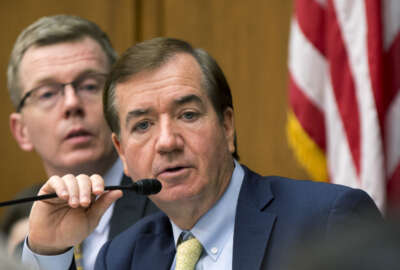Subscribe to Federal Drive’s daily audio interviews on iTunes or PodcastOne
The State Department is shuffling its decks in a reorganization that’s leaving employees feeling uncertain, but State officials say the changes could save $5 billion to $10 billion.
In order to enact the changes it wants, State Department officials need congressional help and Tuesday the reorganization plans faced a serious test: the House Foreign Relations Committee.
Deputy State Secretary John Sullivan brought the beginnings of the department’s plan to lawmakers in hopes they would support the legal authorities State needs to revamp its way of doing business.
Congressional Democrats, however, were skeptical of the State Department’s ability to do its job, reorganize, save money and take a 32 percent budget cut as proposed by President Donald Trump’s 2018 budget.
Sullivan outlined a handful of tenets that serve as key features to the reorganization plan.
“We need to streamline the policy creation process and optimize and realign our global footprint,” Sullivan said. “The world is changing quickly and State and USAID need to be nimble. That means taking inputs from the field, turning them into evidence-based recommendations and executing them as quickly as possible.”
Sullivan said State also wants its reorganization to maximize the impact and accountability of foreign assistance. That means strengthening planning among the more than 20 agencies that provide foreign assistance.
State wants to create a more effective global service delivery framework to reduce operational costs and redundancies, an area that will be part of the $5 billion to $10 billion cut.
“We want to reduce red tape and bureaucratic hurdles by making management and administrative functions do what they were intended to do — support our professionals as they change posts, develop their skills and serve their country all over the world,” Sullivan said.
The final two areas State wants to work on include optimizing human resources to recruit the most talented employees and improving IT platforms.
Sullivan said the cost of legacy systems is “staggering.”
The areas of interest from the reorganization come from teams within State made up of nearly 300 professionals. State also surveyed its workforce, taking into account 35,000 responses from its more than 75,000 employees.
Sullivan said the response was proof that the reorganization is employee-led from the bottom up.
However, lawmakers like Rep. Gerry Connolly (D-Va.) questioned whether the reorganization was truly coming from the employees.
“If you’re going to have a bottom up reorganization for State Department and USAID and they already know there is going to be a third cut [from the budget] leading to the attrition or lay off of somewhere probably north of 2,000 employees. I’d say that puts a little damper on my enthusiasm from the bottom up effort to reorganize State Department because I’m worried about my own job security and I wonder how sincere the effort is if in advance I’m already told what the parameters are,” Connolly said.
Connolly said the cuts send a message to employees about the value the government places on their work.
It’s important to note that the congressional budget does not reflect the president’s 32 percent cut to the State Department.
Still, Sullivan admitted morale in the State Department and USAID is lacking.
“I think there is uncertainty. We are doing our best to reduce that uncertainty. This testimony by me today is part of that process. I’ve had a townhall meeting with employees. I’ve had small group meetings with employees. The secretary has initiated a regular outreach both by email and in-person with employees. We are doing all we can now to reassure them that this process is employee-led, they are valued and diplomacy is valued by this government and by this secretary,” Sullivan said.
Not all lawmakers were skeptical of the administration’s effort.
Rep. Ann Wagner (R-Mo.) said as a former ambassador she welcomed cuts to the department.
“I am well aware that State Department is a bloated bureaucracy and reassessing everything from hiring to diplomatic programing to cutting unnecessary departments is critical to advancing U.S. diplomacy into the 21st century. I believe that we can balance State Department’s checkbook while promoting American leadership,” she said.
A report sanctioned by the House Foreign Relations Committee and published by the Atlantic Council supported cutting some of the bureaucracy.
The report argued that State has amalgamated so many specialized bureaus within its organizational chart that 50 to 60 people now report directly to the secretary, a situation the authors called “unmanageable.”
The problem has been made worse, the authors said, by the proliferation of single-focus area special envoys, appointments that are usually driven by Congress.
Copyright
© 2024 Federal News Network. All rights reserved. This website is not intended for users located within the European Economic Area.
